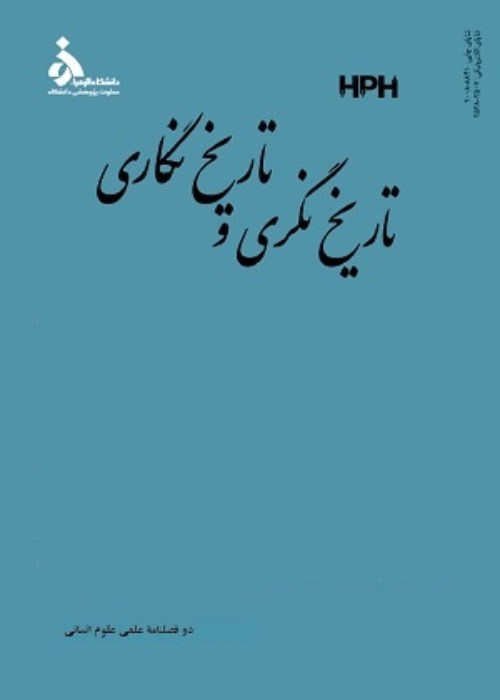An Event, A Historian, Three Narrations: A Critical Analysis of Kasravi's Narratives of the Uprising of Sheikh Mohammad Khaybani
Author(s):
Article Type:
Research/Original Article (دارای رتبه معتبر)
Abstract:
Post-Constitutional uprisings are a good subject for different, conflicting and sympathetic comments and narratives of political activists and observers. Each of them has looked at it from the point of view, mental structure, ideology, group and national interests. One of the most prominent activists in the narrative of the street uprising is Sayyid Ahmad Kasravi, of whom there are two historical and one personal narrative left. This article seeks to dissect Kasravi's trilogy of narratives and his political sources by utilizing the critical analysis approach of Michael Tulane's narrative. Kasravi's first narrative has two levels of analysis: Level one is a sociological-historical analysis; he has a mixed approach to the constitutionalism of the Azerbaijanis, their freedom and the activities of the Democratic Party and the fields of the uprising. Another level is the individualistic and motivational approach to psychology that provides a pessimistic and reductionist analysis of the street and its rise. Although Kasravi himself claims to have a historical approach and is far from a political one, his two levels of analytical and narrative attitudes show that he is influenced by attitudes of patriotism and concerned about foreign interference. At the time of writing this text (1302 AH) Kasravi is not a famous historian. But in the second narrative, which has been told in 18-year History of Azerbaijan, it has seen the uprising as an important step in a positive and constitutional street activism. In the third narrative, which is purely memoirical, he has revised the earlier narratives, there is also an individual motivational level in the affirmation of the street. The shift means Kasravi's migration from Tabriz to Tehran, transition from beginner to professional historiography, transition from patriotism to temperate nationalism, later to radical nationalism, subversion of rival feelings, and so on, were the context that prompted him to present three different narratives over three periods.
Keywords:
Language:
Persian
Published:
Journal of Historical Perspective & Historiography, Volume:29 Issue: 23, 2019
Pages:
97 to 117
magiran.com/p2089445
دانلود و مطالعه متن این مقاله با یکی از روشهای زیر امکان پذیر است:
اشتراک شخصی
با عضویت و پرداخت آنلاین حق اشتراک یکساله به مبلغ 1,390,000ريال میتوانید 70 عنوان مطلب دانلود کنید!
اشتراک سازمانی
به کتابخانه دانشگاه یا محل کار خود پیشنهاد کنید تا اشتراک سازمانی این پایگاه را برای دسترسی نامحدود همه کاربران به متن مطالب تهیه نمایند!
توجه!
- حق عضویت دریافتی صرف حمایت از نشریات عضو و نگهداری، تکمیل و توسعه مگیران میشود.
- پرداخت حق اشتراک و دانلود مقالات اجازه بازنشر آن در سایر رسانههای چاپی و دیجیتال را به کاربر نمیدهد.
دسترسی سراسری کاربران دانشگاه پیام نور!
اعضای هیئت علمی و دانشجویان دانشگاه پیام نور در سراسر کشور، در صورت ثبت نام با ایمیل دانشگاهی، تا پایان فروردین ماه 1403 به مقالات سایت دسترسی خواهند داشت!
In order to view content subscription is required
Personal subscription
Subscribe magiran.com for 70 € euros via PayPal and download 70 articles during a year.
Organization subscription
Please contact us to subscribe your university or library for unlimited access!


